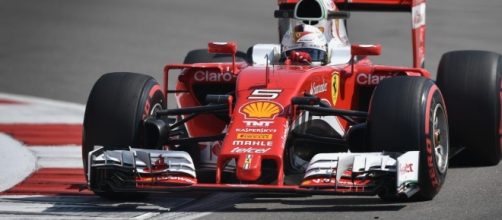Scuderia Ferrari won a dominating victory at last week's Monaco Grand Prix. It was a feat the car maker hadn't accomplished since 2001 with then-champion and legend Michael Schumacher. This victory, however, came with some controversy and raised the age-old question in Formula 1 -- are team orders still being used?
Ferrari has been a staunch supporter or team orders in the past
In the past, Scuderia Ferrari has employed a 1-2 driver strategy. This, quite simply put, means they have a number one driver, that is the prospective champion, and a number two driver, who supports him.
Should the number one driver fall out of the race, then number two is expected to continue and to win in his place. The number one driver, however, is the priority and he typically gets better equipment and the strategy that is necessary for him to win the race, or at least garner the most points. On occasion, this means the second driver must give up position so that the first driver will be able to place better, or even win, and get the most points possible.
Never was this as prevalent as during the Michael Schumacher era when Rubens Barrichello was instructed on several occasions to let Schumacher by to gain position. Barrichello even gave up the race lead once for Schumacher. Felipe Massa also gave up position for Fernando Alonso when they were teammates at Ferrari, although often with much more decorum.
Before the start of one Grand Prix, Massa’s car mysteriously failed tech, enabling Alonso to have a better place from which to start the race when Alonso was battling Sebastian Vettel, who then drove for Red Bull.
Ferrari is not the only team in Formula 1 to utilize team orders or the aforementioned strategy. Mercedes has also participated in the use of team orders. In fact, on one occasion, when Nico Rosberg and Lewis Hamilton were battling for the championship, Rosberg demanded that Team Principal Toto Wolf order Hamilton to give up a spot for Rosberg. Hamilton refused, and their rivalry grew even more ardent in nature. Another example would be Sebastian Vettel and Mark Webber when they both drove for Red Bull.
The final year of Webber’s time in Formula 1, Webber demanded that Vettel, who was faster than Webber, give up a position so that Webber may have a chance to win. Vettel declined to acquiesce and went on to win the race.
Did Ferrari employ team orders at Monaco to allow Sebastian Vettel to win the race?
The first claims of Ferrari using team orders started as soon as Sebastian Vettel snatched first place from teammate Kimi Raikkonen during the Monaco Grand Prix. Raikkonen led most of the race, from the pole, and turned the fastest lap on several occasions. Raikkonen, however, is not in contention for the Formula 1 World Championship and Vettel is currently leading the standings against rival Lewis Hamilton.
Raikkonen went into the pits leading the race and came out to see Vettel’s car go flying by him. Immediately on social media and throughout newscasts everywhere the hypothesis that Raikkonen had been held up in the pits could be heard but Ferrari made no comment, and the drivers finished in that order.
Sebastian Vettel brought Ferrari their first victory at Monaco in 16 years, with the last driver to do being his mentor and hero, Michael Schumacher. On the podium, Kimi accepted second place graciously, despite a grim face. The bells in Maranello heralded the victory regardless -- the driver is not as important as the victory.
Ferrari denied all allegations of team orders after the race and both Raikkonen and Vettel corroborated that they had not received any such direction.
Ferrari continued to celebrate the victory, ignoring the suggestion of wrongdoing and instead focusing on the championship and the fact that they are in the lead for the first time in a very long time. The question of team orders still lingers and will most likely come into question again as Ferrari continues to battle Mercedes for the title. For now, however, Ferrari is content to celebrate their win and their current place atop the leader board.


